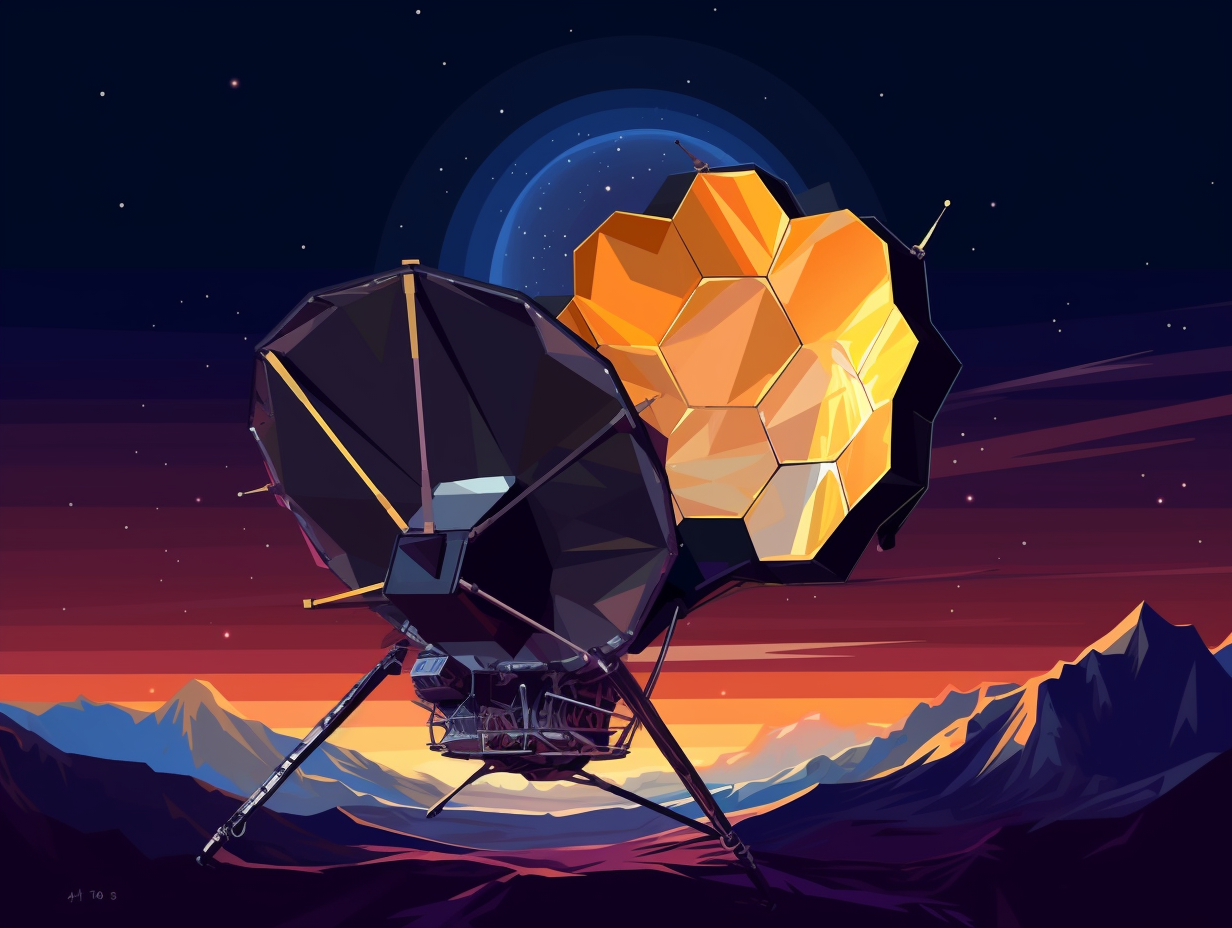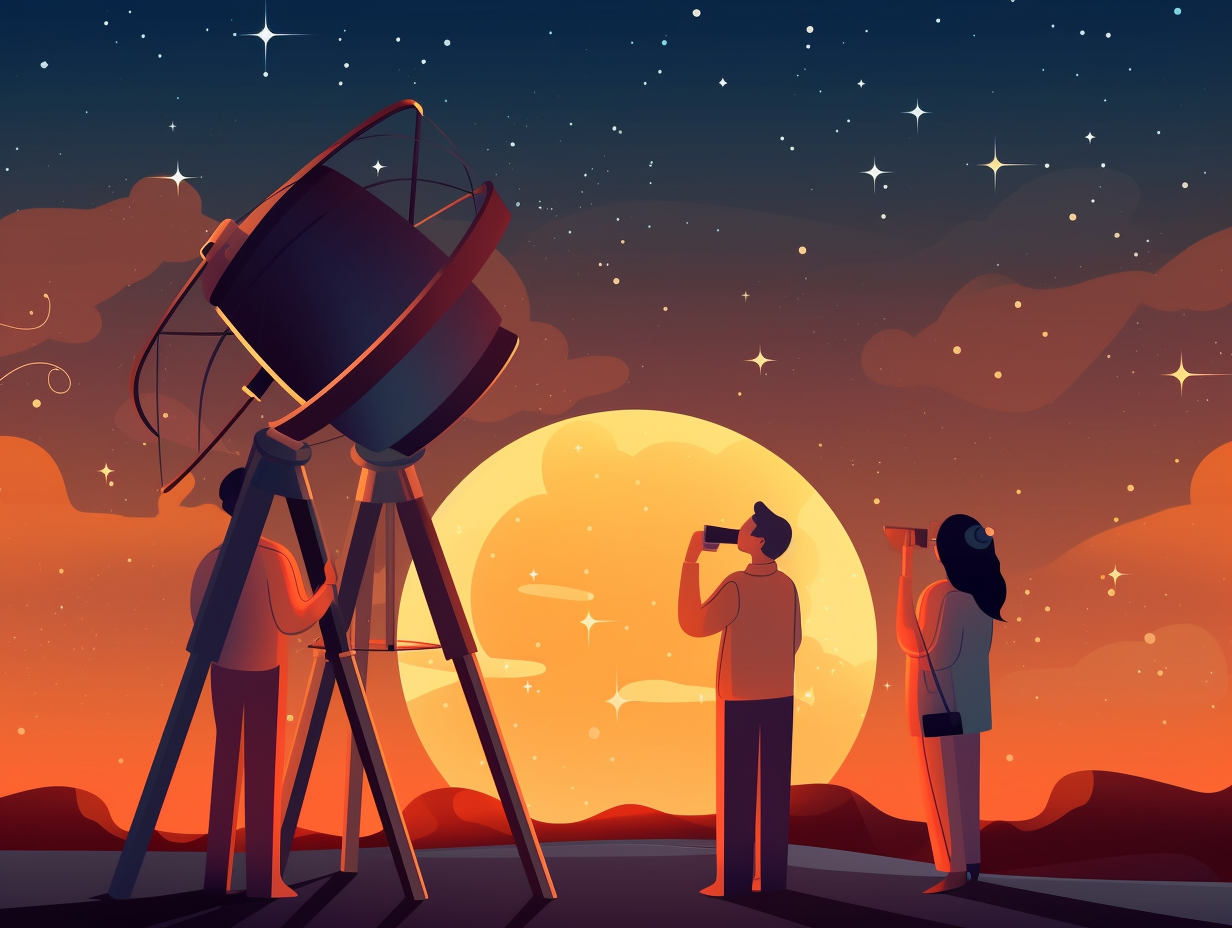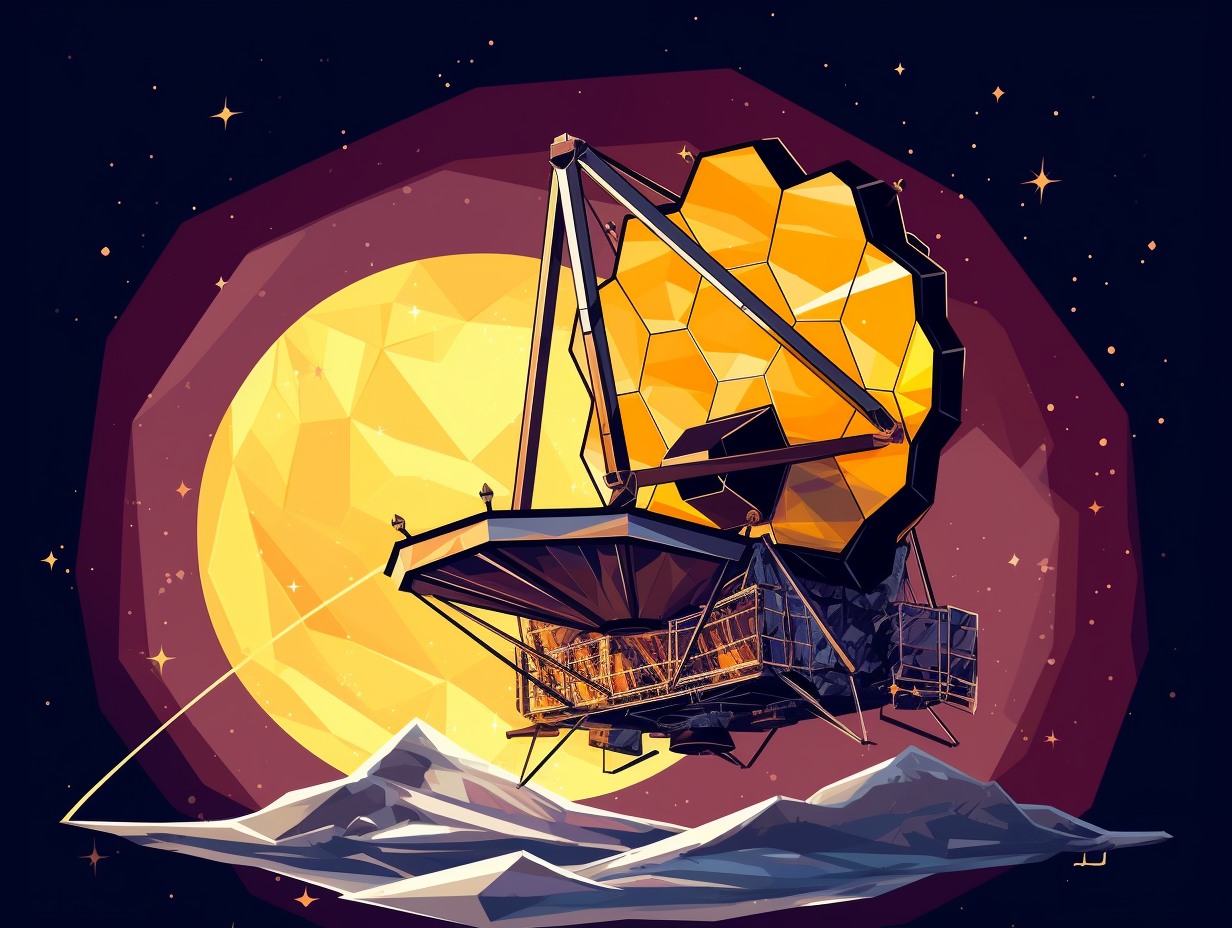Discover the Universe: 14 Amazing Fun Facts About the James Webb Space Telescope

1. Ultimate Cosmic Stalker
If the Hubble Telescope is just a nosy neighbor peeking through the curtains, then the James Webb Space Telescope is the ultimate cosmic stalker with a serious telescope upgrade: Positioned 1.5 million kilometers from Earth, this celestial spy captures images of even the most distant galaxies in infrared light, enabling it to out-snoop its Hubble counterpart by magnitudes.
Source => tech.hindustantimes.com
2. NASA Reality Show Star
If the James Webb Space Telescope were to audition for the latest NASA reality show, it might boast about its "reflective" personality, sporting 18 large pieces of "bling" made from gold-plated mirrors, and a tennis court-sized sunshield wardrobe: But seriously, folks, this aptly named telescope isn't just a tribute to James E. Webb, the esteemed administrator who led NASA during the Apollo moon landing era, but a cosmic marvel designed to revolutionize our understanding of the universe, building on the foundation of the legendary Hubble Space Telescope.
Source => foxweather.com

Did you know Galileo's first telescope observation in 1610 led to the discovery of Jupiter's four largest moons and changed our understanding of the solar system? 🌌🔭 You'll be over the moon with more fun facts!
=> Fun Facts about Telescopes
3. Mirror Size Showdown
Mirror, mirror on the wall, who's the largest space eye of them all? Step aside, Hubble, because there's a new cosmic king in town: The James Webb Space Telescope flaunts its impressive 6.6-meter (21.7-foot) diameter primary mirror, dwarfing Hubble's with over two and a half times the size and six times the collecting area, ready to snap stunning high-resolution images and spectra of the farthest corners of the universe.
Source => webbtelescope.org
4. Galactic Plot Twist
Hold onto your telescopes and cue the dramatic space music, folks: the James Webb Space Telescope has spotted a cosmic plot twist! In a move straight out of an intergalactic soap opera, it turns out there were six massive galaxies lurking about a mere 500 million to 700 million years after the Big Bang, much more massive than previously anticipated, throwing a black hole-sized wrench into our understanding of galactic formation and evolution. Thanks to its infrared nosiness, this cosmic detective has unveiled the faint light of these ancient celestial bodies, bringing their interstellar secrets to light.
Source => cnn.com

5. Tennis Star Sunshield
If the James Webb Space Telescope were a tennis star, it would absolutely ace the competition with its massive sunshield serving as the coolest pair of shades on the court: This mighty sunshield, having just been deployed successfully, spans a whopping tennis-court-sized area and is composed of five layers of specially coated Kapton material, designed to shield the telescope's sensitive gizmos from the Sun's heat and light – though we wouldn't recommend trying to snag these "sunglasses" for your next beach vacation due to their space-bound requirements and absence of atmospheric protection.
Source => en.wikipedia.org
6. Shade-Throwing Cryo-Diva
Talk about throwing shade: the James Webb Space Telescope sports a five-layer sunshield that not only blocks sunlight like a cosmic diva but also keeps its contents ultra-chilly for detecting infrared light. The diva-worthy primary mirror consists of 18 hexagonal segments coated in gold and made of beryllium, which need extra cooling time at cryogenic temperatures – that's why officials patiently wait for those mirror segments to cool down a few more Kelvins before progressing to the next alignment phase.
Source => space.com
7. Galactic Rubik's Cube
Houston, we have a puzzle: a 10-billion-dollar, space-bound, galactic Rubik's cube with 178 release mechanisms that takes a whopping two weeks to untangle! In reality, the James Webb Space Telescope's unfolding process is dubbed "the most complicated spacecraft activity" by NASA's lead systems engineer, as it involves more than 50 separate deployments and requires every move to be pulled off with precision, lest it becomes an astronomically expensive piece of cosmic debris.
Source => screenrant.com
8. Bar-Hopping Star Gazer
When the James Webb Space Telescope walks into a bar, it orders a shot of starlight, 18 mirrors, and says "line 'em up": The telescope has 18 primary mirror segments that work together to capture celestial images, requiring NASA to align each segment precisely by reflecting light from the same star, forming a mosaic of 18 points of light before being able to take scientific imagery.
Source => spaceexplored.com
9. Energizer Bunny Telescope
Outshining the Energizer Bunny when it comes to going and going: The James Webb Space Telescope is powered by a solar array and has a designed lifespan of more than 20 years, making it a long-lasting research tool for scientists around the world.
Source => smithsonianmag.com

10. Friendly Lagrange Neighbor
Whoever said, "Keep your friends close and your enemies closer" definitely didn't have the James Webb Space Telescope in mind: Unlike the dusty Moon, Webb resides near a comfy Sun-Earth Lagrange point 2 (L2), far from Earth's space-dust drama, and orbits safely in an elliptical halo, ranging between 250,000 and 830,000 kilometers (150,000 - 500,000 miles) away from us.
Source => webbtelescope.org
11. Colossal Space-Eye Mirror
Mirror, mirror on the wall, who's the largest space-eye of them all?: Behold the James Webb Space Telescope, boasting a colossal mirror composed of 18 hexagonal segments that's over six times larger than Hubble's - granting it the unmatched power to gaze deeper into the universe and unravel cosmic mysteries.
Source => asc-csa.gc.ca
12. Frosty Superhero Cape
Move over, Speedy Gonzales, there's a new champ in town: The James Webb Space Telescope's sunshield took just 1 1/2 days to tighten its motor-driven cables—half the expected time! This 70-foot by 46-foot (21 meters by 14 meters) frosty superhero cape keeps its infrared, heat-sensing science instruments in an eternal subzero shadow, making it the telescope's most complicated and critical feature, perfected after years of engineering.
Source => timesofisrael.com
13. Chill Cosmic Cruiser
Who needs speed when you're a cosmic masterpiece, right? As cruising in the space lane is more its vibe: the James Webb Space Telescope, granddaddy of all telescopes, orbits at a chill 25,000 mph, a million miles from Earth, enabling stable positioning and precision in measuring distant celestial objects – all while stealing the limelight with its unparalleled scientific prowess and a teamwork display for the ages by NASA, ESA, and the Canadian Space Agency.
Source => scitechdaily.com
14. Celestial Origami Master
Who needs a gym membership when you can do celestial origami instead: The James Webb Space Telescope is so colossal that it had to be folded up like a cosmic paper crane just to fit into a rocket fairing, and once in space, its mirror segments stretched out to reach a staggering 21-foot (6.5-meter) diameter.
Source => space.com
Related Fun Facts




















